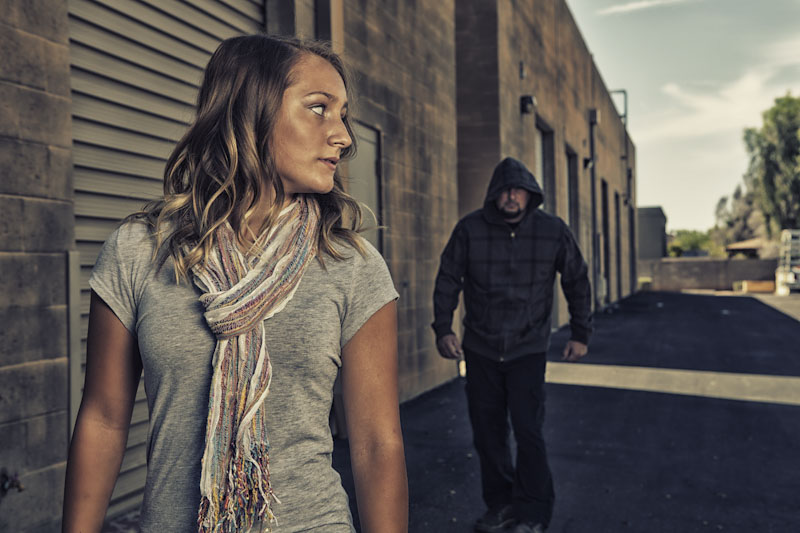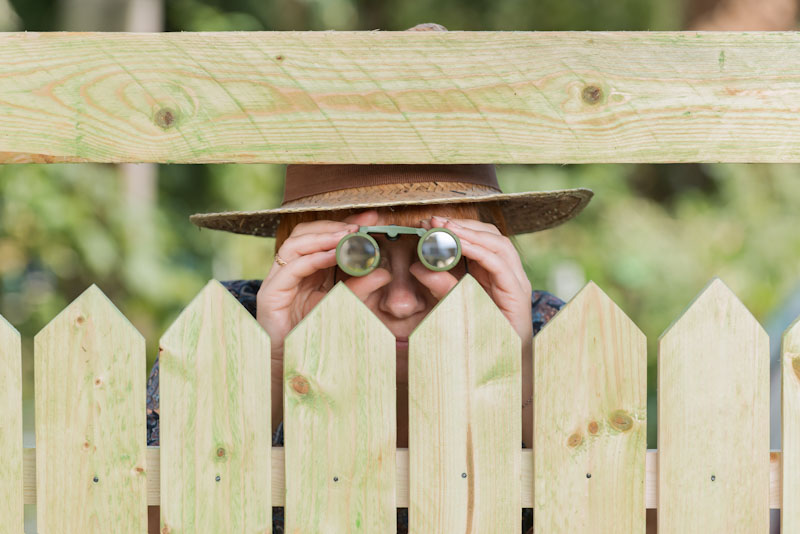Although it isn’t considered one of our top survival priorities, self-defense should be right at the top of the list. The reason it isn’t, is because there are a lot of survival situations where there is no need to defend ourselves. That isn’t the final word though, as when we come under attack, we have to defend ourselves first, before thinking about warmth, water or food. So, for that one moment, self-defense becomes the number one survival priority; to the point where we may have to sacrifice other needs, just to defend ourselves, ensuring our survival.
Keep in mind that just surviving the actual confrontation may not be enough, especially in a post-disaster time, when medicines and expert medical help may be hard to find. I don’t have actual figures on it, but there were probably more people killed throughout history due to infections caused by wounds suffered in battle, than there were people who died on the battlefield from those wounds. Before the development of antibiotics, any wound was a serious matter, often leading to death.
While we have excellent medical services available to us today, allowing people to survive very grave wounds, it isn’t perfect. Before the emergency room doctors can work their miracles, the patient has to arrive at the hospital alive. One example of how grave receiving a personal attack can be is taken from the city of Houston. This year, every carjacking has resulted in the death of the vehicle owner; even though that’s a crime which we wouldn’t expect to be classified as a “deadly assault.”
The thing we need to realize, is that most crimes which can be classified as deadly assaults can be avoided. One self-defense instructor I know says, “You win every attack you manage to avoid.” That may sound a little trite, but if you think about it for a minute, you’ll realize it is true. Your goal in the confrontation is to get out of it without any harm coming to you. The perpetrator’s goal is to get something from you, even if that means hurting you. Of the two of you, only one can accomplish their goal. When you succeed in avoiding the confrontation, you’re that one.
The question is, how do you avoid the confrontation?
The Pattern of the Attack
There is a pattern that muggers use in their attacks. These people are professional and do everything they can to make sure that their attack will succeed. While they may not consciously think through following this pattern, they follow it, making sure that they check all the boxes, so that they can both succeed in getting what they want and get away.
Looking for a Target – They are looking for a “soft target,” which they can attack, getting whatever valuables that the target has and get away, with little risk to themselves. Weak targets are good for them, but targets that are unaware are even better.
Choosing the Target – The number one thing that makes someone a good target is that they are not paying attention to their surroundings. It will be easy to surprise them and they are unlikely to be able to provide the police with an accurate description.
Stalking the Target – Following the target to verify their actions and that they truly are a good target. While doing this, they are also looking to see if there are going to be witnesses and scoping out their escape route. The escape is an important part of their attack, getting out of the target’s line of sight as quickly as possible.
Close with the Target – Get within striking distance of their chosen target, coming up from their blind side and preparing to attack. Closing should bring them withing arm’s reach, without being noticed.
Attacking the Target – This is an ambush, not a duel. They will attack quickly and violently, getting what they want and beginning their escape. Ideally, there will be no opportunity for the victim to respond.
All that is required to avoid becoming the victim in this scenario, is breaking up their pattern. Anything you can do, which messes up any of these five steps, will make them decide it’s a good day to be elsewhere, leaving you to look for a better target.
Spotting the Criminal
There’s been a lot of negative things said about profiling; but that doesn’t change the fact that profiling people based on their appearance is a useful tool, both for the police and for us. There are certain things we can spot, when looking at criminals, which will identify them as potential attackers. Ignoring those is like walking around blind.
The first of these is their body posture. Normal people walk around looking normal. Criminals don’t. People who are intending to attack others will often adopt some sort of aggressive stance, as if they are preparing for a fight. They will often turn side-on to their intended victim, like a boxer or martial artist will, offering less of a target to be hit. Their bodies will be tense, rather than relaxed, like other people would be.
Another part of this might be the way they are dressed, as there are some articles of attire that are common to muggers. Hoodies, with the hood up are common, as the hood helps hide their face, making it harder for their victims to identify them. Of course, not everyone wearing a hoodie is a criminal, even with the hood up; but when it’s hot out and someone has their hood up, it’s at least suspicious.
The next thing to look for is eye contact. There are three different ways that an attacker might look at you. The first is to look intently at you. that might be intent as if they are staring at you; but it could also be in that they keep looking back at you. If someone is alternating looking at you and looking at their phone, you can pretty much take it as they are not doing anything on their phone, except for trying to camouflage that they’re looking at you.
Rather than looking intently at you, any criminal is going to try to make it seem like they are not looking at you. Two ways they might try to do that is looking through you, as if they are looking at something behind you or looking past you, while keeping you in their prereferral vision. Considering that most people don’t really make eye contact with others on the street, anyone looking at you, in any of these ways, is likely scoping you out or stalking you.
The next thing to look at is their hands. Hands are dangerous, as they can contain weapons, even weapons that don’t look like weapons. A glass soda bottle doesn’t look like a weapon; but I can tell you from experience, that when someone hits you over the head with it, it will hurt enough to stun you, allowing them to steal whatever you have and make their getaway. If it looks like they’re keeping their hands out of sight, assume there’s a weapon in those hands.
Obviously, looking at all this at the same time is difficult. You need to scan up and down, looking at their eyes, their hands and their posture. If you think they look like a threat, assume they are. Don’t make the mistake of thinking you have an overactive imagination. Deciding they are harmless could be the last decision you make, before being attacked.
Stopping the Attack
Once you’ve decided that someone is a potential threat, you need to break up their pattern, so that they will go look for easier prey. There are a number of different ways you can do this; but all require you taking control of the situation. If you are reacting to what they are doing, then they have control. You want them reacting to what you’re doing.
The simplest way of doing this is verbal. Our first and often most effective weapon is our voice. Yell at them, “What are you doing?” “Are you following me?” “What do you want?” Those simple questions put them on the defense, throwing off their game. On the other hand, if they manage to get close and start talking to you, asking you what the time is or if you can spare some change, they’ve got you distracted and reacting to them. Once they’ve done that, they can produce a weapon and take control.
If you can pull it off, head towards them, acting like you’re in control. If you can make yourself look like a threat to them, they won’t want to mess with you. Stand up straight; walk purposefully; make eye contact; act confident; and if you have one, grab your weapon. You might even want to produce that weapon, letting them know that messing with you means a fight. They don’t want that.
Letting them know that you see them and what they are doing will unnerve most muggers. If you are focused on them and what they are doing, they will do everything they can to make sure that you won’t see them doing anything wrong. It pops their bubble, causing them to back off, looking for another victim. Like I said earlier, they don’t want their victims to be able to identify them.











Travelin On | November 23, 2023
|
Muggers, what are they? They are one of many types of predators. An article about predators would probably be way too extensive to write about, there are so many types. There are emotional predators (scheming, manipulative, controlling types of predators who will use guilt, shame, lies, deceit or anything else they can as reins to control their victim to get what they want that is to their advantage), sexual predators – adult and child, vandal predators, thief predators, muggers, home or business robbery predators, murderers, and many more. One of the major things predators do not like is a scene. If there is a potential predator headed your way don’t be afraid to make a scene. Doesn’t have to be accusatory or anything like that. Call out to someone else nearby, whether you know them or not, and if nothing else, ask for the time (if you have a watch on, claim yours stopped), but while doing it, turn to keep the potential predator within view, while getting any weapon you may have ready to use. In calling out to someone else you can use that action to get hold of any weapon you may have without being noticeable. Don’t be afraid to talk louder than necessary. Often the predator will choose to disengage, most often in my experience by changing direction and walking away from my area. Any predator has to have a victim to succeed. Do not choose to be a victim. It doesn’t mean you need to be a predator to not be a victim. Be a responsible accountable adult who doesn’t have their head buried in the sand and unaware of what is going on around you, or having so much pride that you can’t or won’t recognize danger when it approaches. When the danger is past, you can apologize to the person you engaged in conversation and simply tell them that your senses were telling you the person you’d created the scene for was someone you suspected to be a potential predator and you were engaging in self defense tactics to send them on their way. If the person you choose to make the scene with seems to be someone who could also be a potential victim, you’ve done more than just yourself a huge favor. Predators need to stay hidden, they often want to look and act as if they are trustworthy people. Some predators don’t care and will deliberately dress to stay as hidden as possible, but none of them like a scene that draws the attention of others, much less to them. One tactic I used twice when a known or suspected type of particular predator came my direction or was about to accost someone else was to burst into song, as loud as I could clearly sing. “Oh give me a home where the buffalo roam, Where a gun is an asset to own. So if I cannot run I will use this here gun, as Judge Colt here will have the last say.” Once, without knowing it, I sang that with a cop listening. He came over for a visit, I told him why I’d done what I did and he radioed a co-worker. Wasn’t long before they had the predator picked up with stolen goods in possession. A big metro area might not be a good place to sing that particular song or one like it, and if you were to sing such a song, you best have gun on you and be willing and ready to use it. I no longer use that type of song. In later years I’ve made up other songs to create scenes with, but have found that if one can articulate clearly and distinctly so others can understand what you’re saying, using a familiar tune, let people know what’s going on in the song and it gets a lot of people’s attention and has often enough paralyzed a predator. In a store a song can silence the whole store or area in a store and quickly have multiple employees on the scene. Such a tactic can be used as a means to get help too. I was in a fairly large store where I wasn’t known, but as I went down a particular aisle I was aware the dear little lady with walker was in trouble. She was shaking and needed to sit down very badly. She began sweating and I was quite sure she was probably having a heart attack. I grabbed her under her arms and told her to let me safely help her to the floor and I’d get help. I didn’t leave her, just looked to see what aisle we were in and burst into song letting people know the aisle number and there was a medical emergency and an ambulance was required. There were three store employees there within seconds, one with a walkie talkie confirming the need for an ambulance. Do what you can to help or protect yourself or someone else in any way you can. If it isn’t singing, and a good singing voice isn’t required, articulation is, find your own way, but make a scene to get help or prevent unwanted attention.